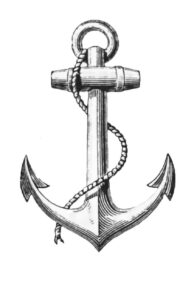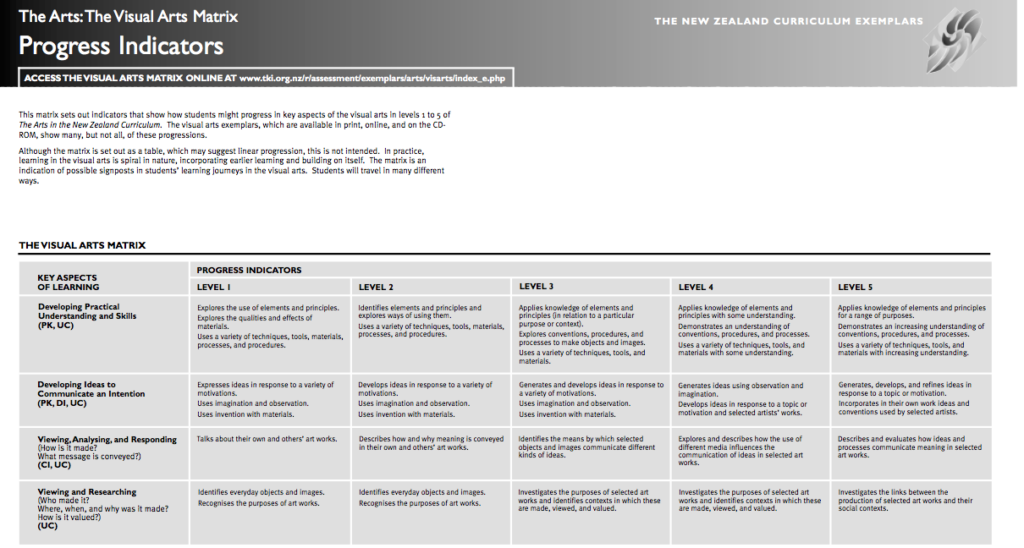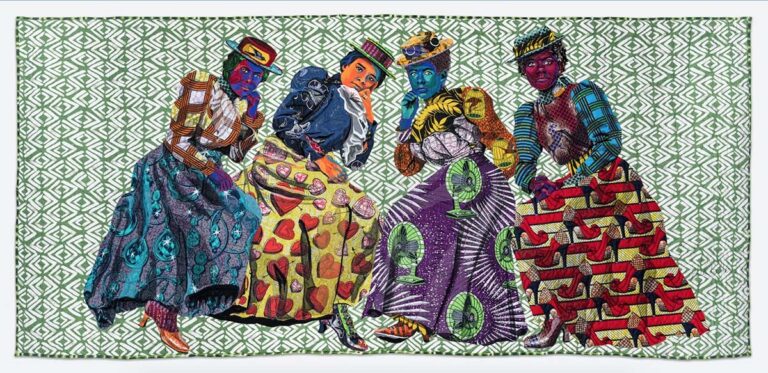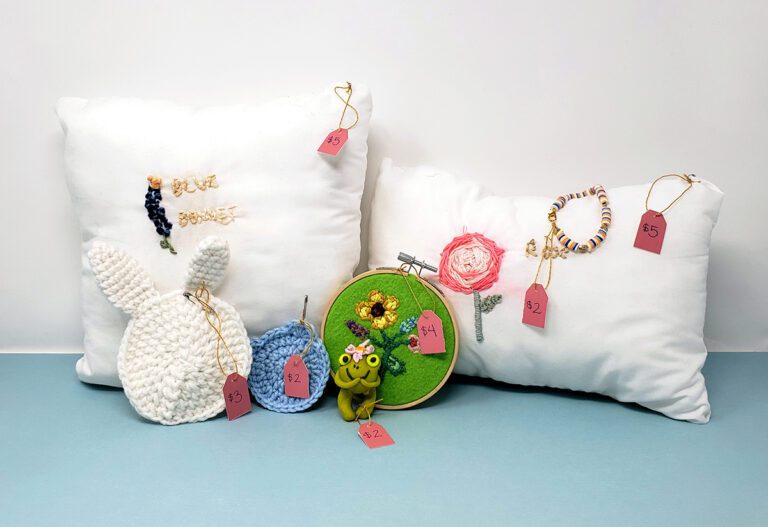In a recent Assessment in Art Education class, we had a wonderful debate centered around the pros and cons of using anchors for assessment. I decided I would take this discussion to the AOE community in the hopes of continuing this conversation and hearing what YOU all think about this hot topic.

What are Anchors?
In a nutshell, anchors are visual images or exemplars that teachers use to correlate with grading criteria. For example, when I student taught in New Zealand (many, many moons ago) we were required to grade students artwork using a 5-point grading scale (with 5 being the highest). To view a sample Matrix of Curricular Indicators we used, click here or on the image below.
At the end of a particular unit, my co-operating teacher and I had to submit a student example correlating to each of the points on the grading scale to the Ministry of Education along with a written description defending our choices. The Ministry, in turn, audited each teacher’s samples to make sure we were grading consistently and provided feedback if we were not. In the states, this is something you might do at the district level. (Keep in mind, New Zealand has a relatively small population, so it was easier to accomplish countrywide initiatives.)
In your art department, for example, you could determine what specific skills represented mastery of different criteria and share examples of work at each level. This leads to a wonderful, eye-opening conversation about assessment as teachers try to keep their grading consistent. And, by the way, this doesn’t mean that you all have to teach the same lessons. If you grading criteria is Use the slab technique to create a recognizable 3D form, there are many ways to teach this particular standard and therefore, many different exemplars to compare and contrast.
After you have your grading criteria and anchors in place, you can easily refer to them while you are grading and better yet use them to justify grades, should parents, administrators or students require hard evidence. However, the controversy unfolds around this point:
Do you show your students assessment anchors?
Many class participants DO show students examples of student work. Some show only high-end examples, while others show a variety of examples and have student discuss the pros and cons of each piece. Some show only teacher samples, while others show only artists’ work. And still others create and use a visual matrix for each lesson. On the other hand, there are teachers who prefer not to show samples, so that students were more apt to use their imagination and not copy the work of the teacher or other students. The results and opinions were quite varied.
What is your opinion and experience using anchors in the art room?
Should assessment criteria be clear and visible or left open ended in the art room?
Magazine articles and podcasts are opinions of professional education contributors and do not necessarily represent the position of the Art of Education University (AOEU) or its academic offerings. Contributors use terms in the way they are most often talked about in the scope of their educational experiences.





